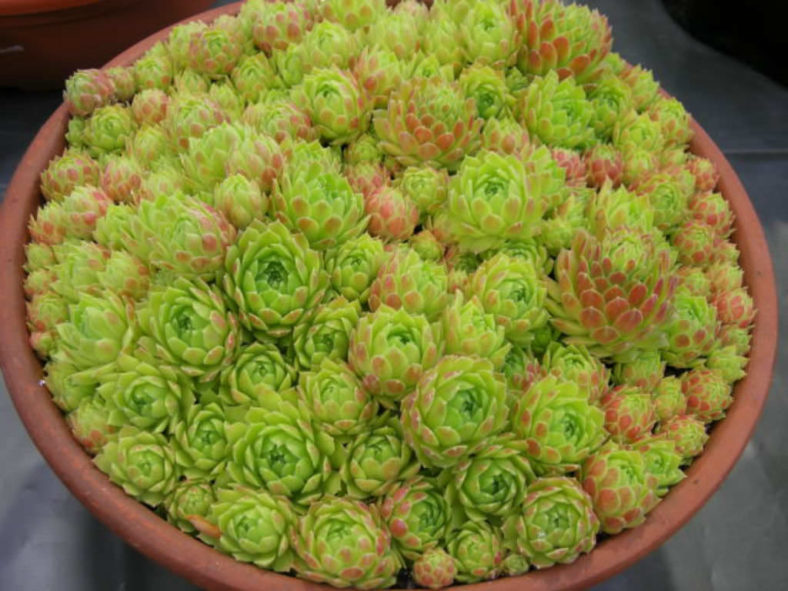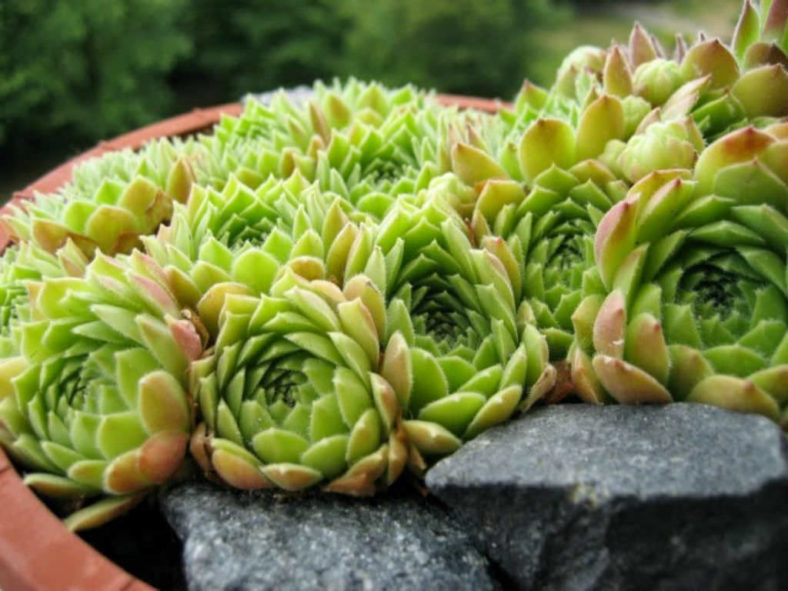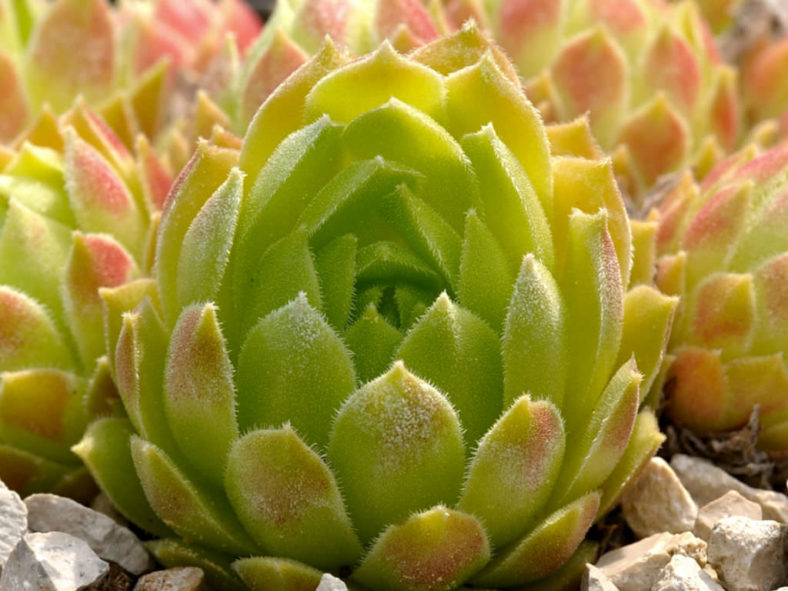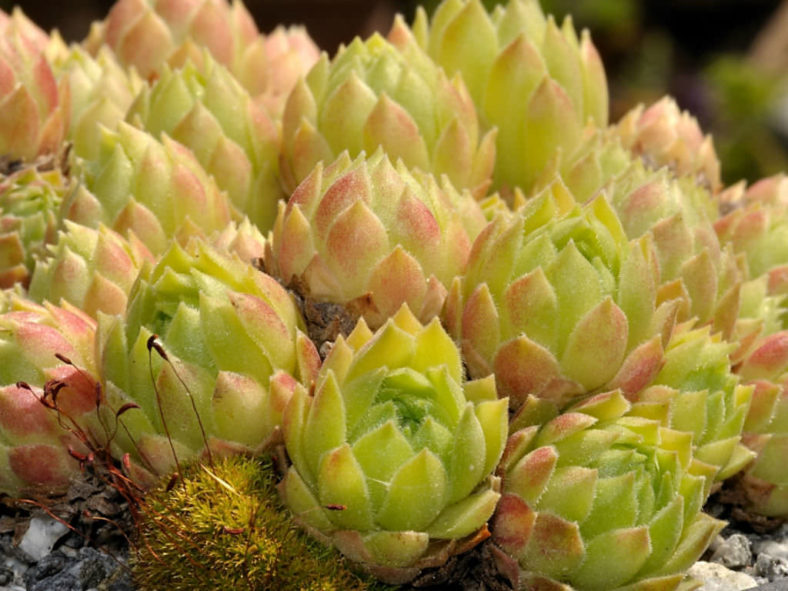Scientific Name
Sempervivum atlanticum (Ball) Ball
Common Name(s)
Hen and Chicks
Synonym(s)
Monanthes atlantica, Sempervivum tectorum subsp. atlanticum, Sempervivum tectorum var. atlanticum
Scientific Classification
Family: Crassulaceae
Subfamily: Sedoideae
Tribe: Sedeae
Subtribe: Sedinae
Genus: Sempervivum
Origin
Sempervivum atlanticum is native to Morocco (High Atlas Mountains).
Description
Sempervivum atlanticum is a low-growing succulent that forms small rosettes of pale green leaves flushed red when exposed to intense sunlight. The rosettes can reach 3.2 inches (8 cm) in diameter and freely produce offsets on short stolons, forming a dense mound over time. The leaves are fleshy and finely hairy, measuring up to 2 inches (5 cm) long and 0.5 inches (1.2 cm) wide.
The flowers are star-shaped, 12-merous with white to pale pink petals with broad red-purple median bands, and appear on a leafy stalk in summer. The flower stalk can grow up to 10 inches (25 cm) tall. After flowering, the mother rosette dies to leave room for the offsets.

Hardiness
USDA hardiness zones 4a to 10a: from −30 °F (−34.4 °C) to 35 °F (+1.7 °C).
How to Grow and Care
Sempervivums are not difficult to grow, provided they are not waterlogged and killed from excess watering. They can be easily grown outdoors and in containers, and they earned the name "Houseleeks" from their tendency to root on the roofs of houses. After the mother plant flowers, it will naturally die, but the plant has likely produced many offsets that will continue to grow by this time. These are excellent for cold windows. Sempervivum earned their popular name, "Hen and Chicks," from their growth habit. The mother plant, or hen, sends off numerous offsets, clustering around her base like chicks. These offsets can be easily repotted, or the plants can be left to form a clumping mat.
Repot as needed, preferably during the warm season. To repot a succulent, ensure the soil is dry before repotting, then gently remove the pot. Knock away the old soil from the roots, removing any rotted or dead roots. Treat any cuts with a fungicide. Place the plant in its new pot and backfill it with potting soil, spreading the roots as you repot. Leave the plant dry for a week or so, then begin to water lightly to reduce the risk of root rot.
Learn more at How to Grow and Care for Sempervivum.
Links
- Back to genus Sempervivum
- Succupedia: Browse succulents by Scientific Name, Common Name, Genus, Family, USDA Hardiness Zone, Origin, or cacti by Genus
Photo Gallery
Click on a photo to see a larger version.


